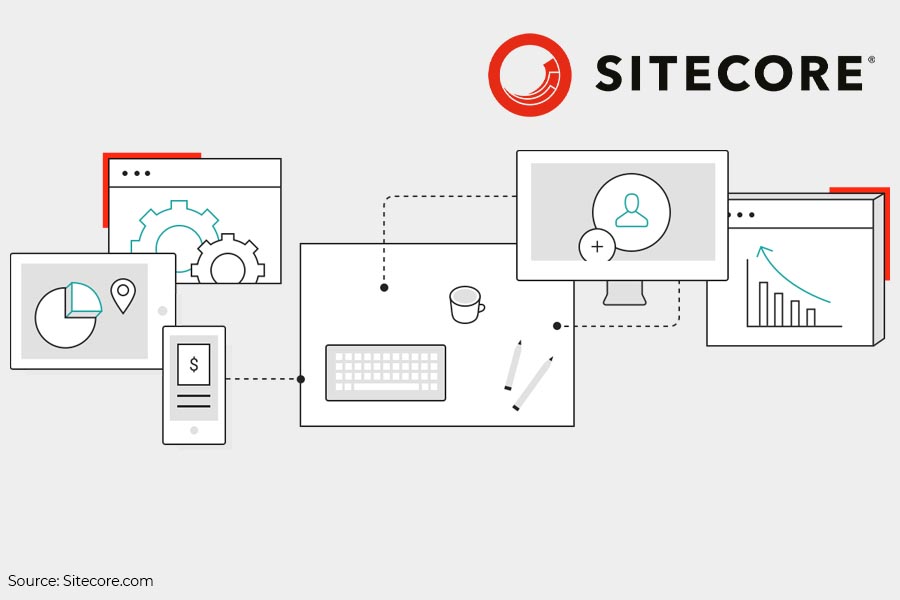Content marketing is becoming more complex by the minute. Almost daily there are new content delivery channels to feed and new customer touchpoints to develop and personalize. Content hub platforms are designed to help simplify content creation and publishing, usually by either connecting multiple content storage and delivery systems (such as ERP, DMS, and CMS) or by centralizing content planning, production, storage, and publication to create a single “source of truth” for content, as well as workflows and tools for end-to-end content lifecycles.
“So wait,” you say. “What’s the difference between a content hub and a DAM?”
I’m glad you asked. Read on!
HOW A CONTENT HUB DIFFERS FROM A DAM
Let’s start by defining a DAM, or Digital Asset Management, platform. I like this one from Theresa Regli of Content Marketing Institute:
“In its simplest form, a digital asset management system provides a secure repository that facilitates the creation, management, organization, production, distribution, and, potentially,monetization of media files identified as digital assets.”
In other words, it operationalizes the management of digital assets through a technology platform, relying on a well-thought out taxonomy and metadata to perform its function. As Regli also notes, it isn’t just the asset files themselves a DAM manages (videos, images, enriched product content, etc.) but also an entire universe of media “products” in formats and forms, from an e-book to a print catalog, as well as rights and restrictions for how many of the digital files are used. And it has to facilitate consumption by however many delivery channels a brand uses for publishing its content.
That’s a lot.
But a content hub does even more. Content hubs pick up where DAMs leave off, organizing the flow of content into a defined process around a content lifecycle.
CONTENT HUBS SUPPORT THE CONTENT LIFECYCLE BEYOND CONTENT WORKFLOW
Where individual publication platforms manage and support workflow, few address the entire lifecycle of content assets. What I mean by this is that they generally move content along a timeline, from draft to editing to revision to approval to publication -- but they rarely assist with managing content planning and project management, its movement from its source systems (PIM, ERP, stock photography repositories, etc.) to where it’s enriched or new drafts are created, the addition of media, and so on. Content workflows tend to focus on the steps for creating discrete content “products” delivered via siloed channels, rather than on the management of an interconnected universe of portable, reusable content elements which can change or expire over time.
While workflow within a system is important, it can reinforce content siloes formed by channel-specific processes. By connecting the entire content lifecycle, from creation all the way to analytics review and revision, content hubs benefit all parts of the delivery effort, opening the way for improved communication and transparency and, in some cases, even collaboration via tools and dashboards.
CONTENT HUBS "BLEND" TECHNOLOGIES AT CONNECTION POINTS TO SUPPORT COLLABORATION
In addition to defining and supporting a lifecycle model to manage the complexities of content creation and delivery, content hubs blur the lines among the technologies used in the various phases of that lifecycle. Many content hub platforms provide dashboards that “plug into” various content sources, making it easy to download and edit or to edit right in the system’s interface. Integrations are becoming more sophisticated, tying into creative tools (such as stock photo repositories or even Adobe Creative Suite tools) as well as PIM systems, ERPs, CMS, and social media delivery tools. As the integrations improve, content hub developers are finding ways to incorporate them into user-friendly interfaces to support collaboration and visibility across various parts of the creation and delivery processes.
THE BIGGEST BENEFIT CONTENT HUBS OFFER IS MAKING YOUR CONTENT CHANNEL-AGNOSTIC
The biggest benefit you stand to realize with the implementation of a content hub platform is pulling it out of your delivery channels and into a centrally-stored, transparently-managed, highly-structured environment and process. Why? Because all of these attributes enable your marketers to maintain your brand’s integrity while empowering them to reuse, update, and retire assets as needed so that the freshest content is available across channels. No more outdated product descriptions. No more off-brand image assets. No more “where-did-that-come-from” video files. All channel publishers work from a single source of truth, using approved images for approved purposes. Brand integrity is maintained, duplication is reduced, and your company saves money.
The rising popularity of content hub platforms is easy to understand, and will only increase as the software and integrations become more sophisticated. If you want to take a deeper dive into content hubs, read our Guide To Content Hub Software: What It Is, Why Install It, And How To Select And Prep For It.
You might also be interested in learning more about Sitecore Content Hub.

NIKET ASHESH
Partner






